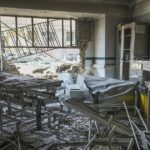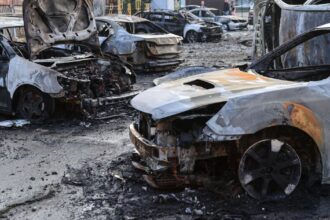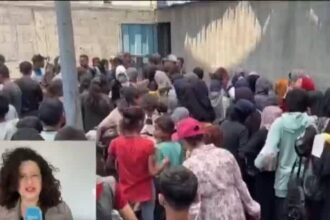In a dramatic escalation that has sent shockwaves through Europe and beyond, Russia unleashed what Ukrainian officials are calling the most extensive aerial bombardment since the full-scale invasion began in February 2022. The massive coordinated strike targeted critical infrastructure across multiple Ukrainian cities, leaving dozens dead and hundreds wounded in its wake.
The pre-dawn assault on Tuesday involved approximately 120 missiles and 90 combat drones, according to Ukraine’s Air Force command. The barrage struck power facilities, residential buildings, and hospitals in at least 15 regions, including the capital Kyiv, Kharkiv, Dnipro, Odesa, and Lviv.
“This represents a significant strategic shift in Moscow’s approach,” said Dr. Marta Kowalski, senior defense analyst at the Canadian Institute for Global Affairs. “The scale and coordination of this attack suggests Russia is attempting to overwhelm Ukrainian air defenses and degrade critical winter infrastructure before Western aid can arrive.”
Ukrainian President Volodymyr Zelenskyy addressed his nation from a partially damaged government building in Kyiv, emphasizing the urgent need for additional air defense systems. “Today’s massive attack demonstrates exactly what we’ve been warning our partners about,” Zelenskyy stated. “Russia is not interested in peace—they’re escalating toward total destruction of our energy system as winter sets in.”
In Kharkiv, Ukraine’s second-largest city, rescue workers continued searching through rubble well into the evening. A six-story apartment building suffered a direct hit, with at least 12 civilians confirmed dead and dozens more injured. Tetiana Myronenko, a 67-year-old resident who survived the blast, described the horror: “I was making tea when the world exploded around me. The walls crumbled, and everything turned to dust and screams.”
The timing of this assault coincides with ongoing political deadlock in Washington over continued military assistance to Ukraine. European defense ministers held an emergency virtual meeting late Tuesday, pledging to fast-track delivery of air defense systems and ammunition.
The Russian Defense Ministry acknowledged the operation but characterized it as a “precision strike against military-industrial facilities,” claiming all targets were “legitimate military objectives.” Independent verification remains difficult, but satellite imagery and on-ground reporting confirm numerous strikes against civilian infrastructure.
Energy officials in Ukraine report that nearly 40% of the national power grid has been damaged, with emergency rolling blackouts implemented across the country. Hospitals are operating on backup generators, while temperatures hover near freezing in many regions.
NATO Secretary General Mark Rubin condemned the attacks as “ruthless targeting of civilians” and promised accelerated defense support. Meanwhile, in Ottawa, Prime Minister Justin Trudeau announced Canada would send an additional $500 million in military aid, including specialized winter equipment and medical supplies.
Military analysts suggest this escalation may signal a new phase in the conflict. “Russia appears to be attempting to break Ukrainian resolve through infrastructural collapse rather than territorial gains,” explained Colonel (Ret.) James Harrison from the Royal Military College. “They’re targeting the systems that keep society functioning during winter months.”
As darkness fell over Ukraine Tuesday night, emergency crews worked by floodlight to restore power and heat to millions. The human toll continues to rise, with many still trapped beneath collapsed structures.
This massive aerial offensive raises profound questions about the international community’s response: Will Western nations finally remove restrictions on Ukraine’s ability to strike military targets inside Russia, or will this escalation prompt renewed diplomatic efforts to end a conflict that grows more devastating with each passing day?
Olivia Carter is a senior correspondent with CO24, reporting on global conflicts and international security.


















